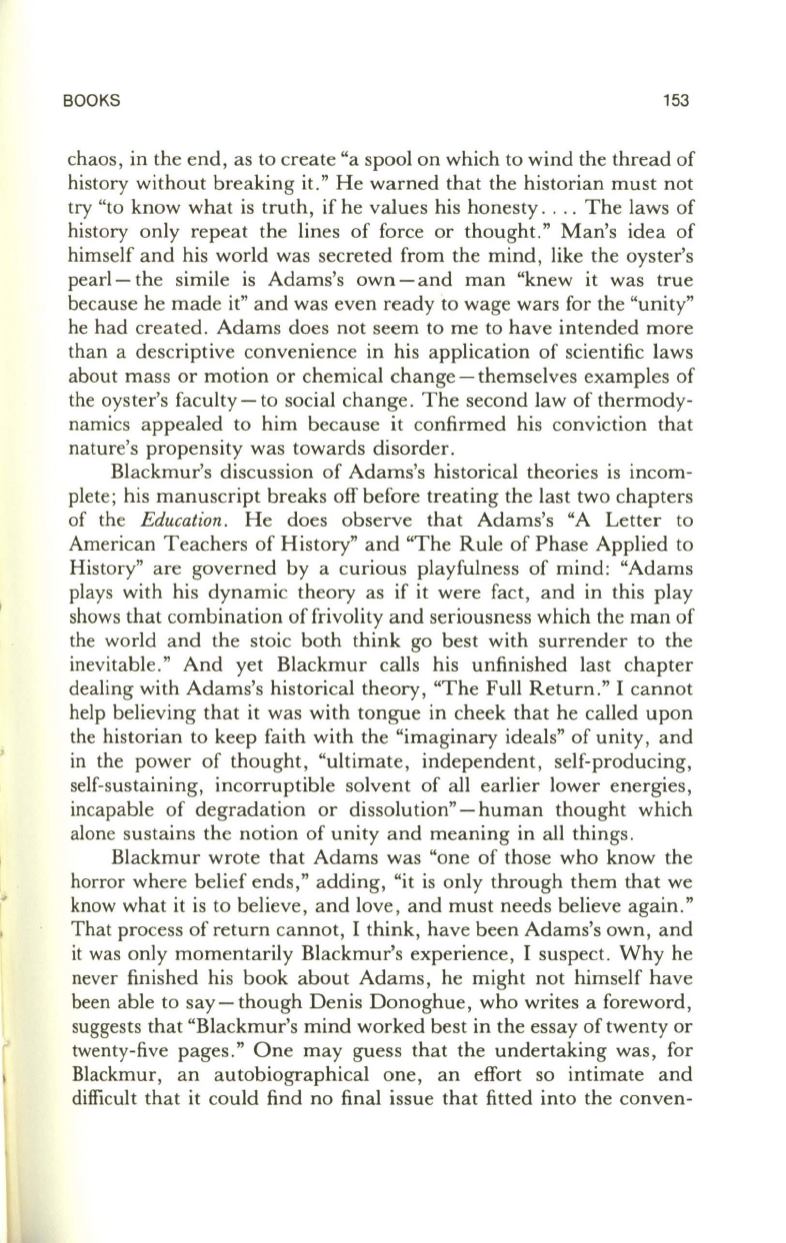
BOOKS
153
chaos, in the end, as to create "a spool on which to wind the thread of
history without breaking it." He warned that the historian must not
try "to know what is truth, if he values his honesty ... . The laws of
history only repeat the lines of force or thought." Man's idea of
himself and his world was secreted from the mind, like the oyster's
pearl- the simile is Adams's own - and man "knew it was true
because he made it" and was even ready to wage wars for the "unity"
he had created . Adams does not seem to me to have intended more
than a descriptive convenience in his application of scientific laws
about mass or motion or chemical change - themselves examples of
the oyster's faculty - to social change . The second law of thermody–
namics appealed to him because it confirmed his conviction that
nature's propensity was towards disorder.
Blackmur's discussion of Adams's historical theories is incom–
plete; his manuscript breaks off before treating the last two chapters
of the
Education .
He does observe that Adams's "A Letter to
American Teachers of History" and "The Rule of Phase Applied to
History" are governed by a curious playfulness of mind: "Adams
plays with his dynamic theory as if it were fact, and in this play
shows that combination of frivolity and seriousness which the man of
the world and the stoic both think go best with surrender to the
inevitable." And yet Blackmur calls his unfinished last chapter
dealing with Adams's historical theory, "The Full Return ." I cannot
help believing that it was with tongue in cheek that he called upon
the historian to keep faith with the "imaginary ideals" of unity, and
in the power of thought, "ultimate, independent, self-producing,
self-sustaining, incorruptible solvent of all earlier lower energies,
incapable of degradation or dissolution" - human thought which
alone sustains the notion of unity and meaning in all things .
Blackmur wrote that Adams was "one of those who know the
horror where belief ends," adding, "it is only through them that we
know what it is to believe, and love , and must needs believe again."
That process of return cannot, I think, have been Adams's own, and
it was only momentarily Blackmur's experience, I suspect. Why he
never finished his book about Adams, he might not himself have
been able to say-though Denis Donoghue, who writes a foreword,
suggests that "Blackmur's mind worked best in the essay of twenty or
twenty-five pages." One may guess that the undertaking was, for
Blackmur, an autobiographical one, an effort so intimate and
difficult that it could find no final issue that fitted into the conven-


